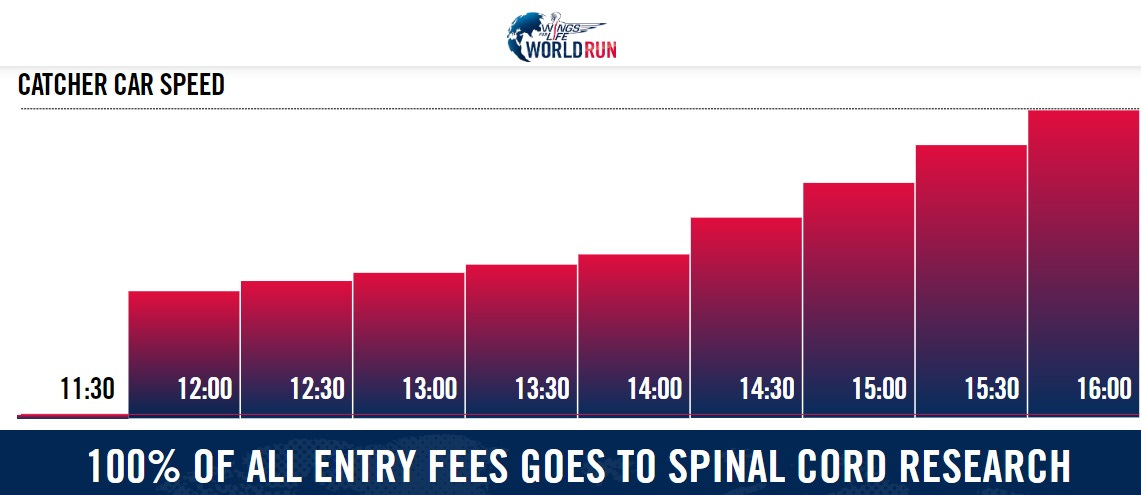The Wings for Life World Run incorporates the most cunning concept in the history of road racing
And it's a big-time fund-raiser for critical medical causes, too
Whenever I am sent a link to or otherwise discover a RUN (powered by n Outside) story and see that Brian Metzler is the author, I feel a little let down. For one thing, I know that I won’t find anything worth bashing. And for another, and worse, I know I’ll wind up spending five or more minutes reading an interesting and often informative article—time I could otherwise devote to being intensely critical of someone or something and ensuring that the world somehow continues revolving around the sun.
Metzler’s May 2 story, “Running for a Good Cause While Being Pursued by a Slow-Moving Chase Vehicle,” describes the Wings for Life World Run, which begins today in dozens of locations worldwide at 11:00 am UTC. That corresponds to 7:00 a.m. on the U.S. East Coast and 5:00 a.m. in Boulder, Colorado, where Metzler and I live. (If Substack has done its job, this is also one hour after the time of publication of this post.)
Metzler will be joining whoever shows up for Denver’s Wings for Life Run, which is actually just west of the city in Jefferson County. He hopes to make it two hours before being pulled off the course, while others may exceed forty miles before being yanked. Some may get yanked two miles in, maybe less. Unless you’re on a great deal of Adderall even for our times, this can’t possibly make sense without reading Metzler’s article and parsing the run’s unique set-up.
I’m surprised I hadn’t heard of this event before, as it’s a big deal and is now in its eleventh year. I have to admit that I still wouldn’t know about it if not for RUN (powered by Outside). This is a truly worthwhile endeavor:
It will once again be the world’s largest running event, with an estimated 200,000 running, walking and wheelchair participants from more than 150 countries. Last year, 206,000 runners collectively raised $6.4 million while each averaged 7.4 miles in the event. Some runners ask friends to donate base on the miles they run, while others (like me) contribute a donation “boost” at the time of entry.
The organizers were already creative in coming up with a format determining placement that seems at least partly inspired by Stephen King’s 1979 novella The Long Walk:
Each walker has a timer initially set to 120 seconds. If their speed in the correct direction drops below four miles per hour, their timer counts down. They are given warnings when their timer reaches 90 (first warning), 60 (second warning), and 30 (third warning), then a "ticket" at 0. Each walker's timer is maintained by a computer on the halftrack, which drives alongside the walkers.
In addition to promising not to shoot any of the participants for fagging out, the organizers had to get even more creative in determining both how long a head start the runners should get on the chase vehicle and that vehicle’s speed. They must have concluded that a variable speed, while confusing, was probably the only way to ensure that the runners would be caught at a somewhat steady rate, at least after a certain point.
Trying to iron this out instead using a constant but slower chase-vehicle speed and the same 30-minute head start would mean a lot of runners and runner-walkers simply pooping out before the vehicle could catch them, a circumstance that kind of takes the fun out of being chased. I imagine this isn’t so unwelcome to someone who has already covered 40 miles—but who also probably has no idea if someone elsewhere on the globe participating in an organ if the same competitive body has run a little bit farther.



